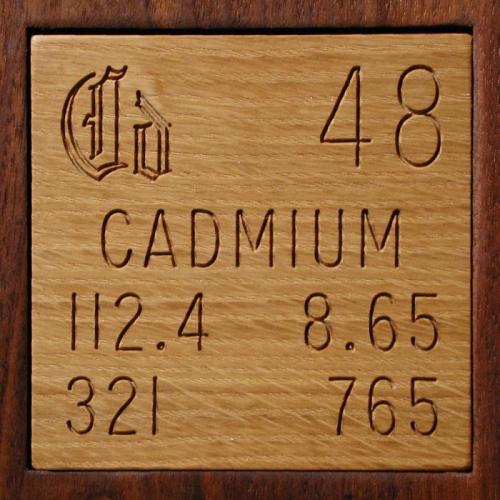  Sublimed cadmium. Sublimed cadmium.
This sample could also be called vacuum distilled cadmium. Sublimation means going directly from a solid to a vapor state, like boiling without going through the liquid state in between. Distillation means the process of evaporating (usually by boiling) a substance and then catching the vapor on a cold surface, where it re-condenses into liquid or solid form. The purpose is usually purification.
For example, alcohol boils at a lower temperature than water, so if you have a fermented mixture of water, yeast, and alcohol, you can separate out the alcohol by heating the liquid to the point where the alcohol evaporates, but the water mostly says put. The alcohol vapor can then be condensed on a cold plate or pipe, and collected in a separate flask.
It's somewhat surprising at first to think that the same thing can be done with metal, but really it's just a question of higher temperatures. Any metal will eventually turn into a gas if you make it hot enough, and that means any metal can be distilled. When the collection plate is cold enough that the metal condenses directly into a solid the result is often beautiful vapor-deposited crystals, as you see in this sample.
Ivan has kindly provided these pictures of the sublimation apparatus he used to create this sample: Picture 1, Picture 2, Picture 3. He reports the cadmium was heated to 250-260 C and the pressure during sublimation was 0.0005-0.0001 mm Hg. The yellow in the bottom of the bulb is cadmium oxide on the surface of the starting material, and you can see the final product collected on the top inside surface of the bulb.
Source: Ivan Timokhin
Contributor: Ivan Timokhin
Acquired: 28 December, 2006
Text Updated: 11 February, 2007
Price: Donated
Size: 3"
Purity: >99.99%
|
| 
|
|